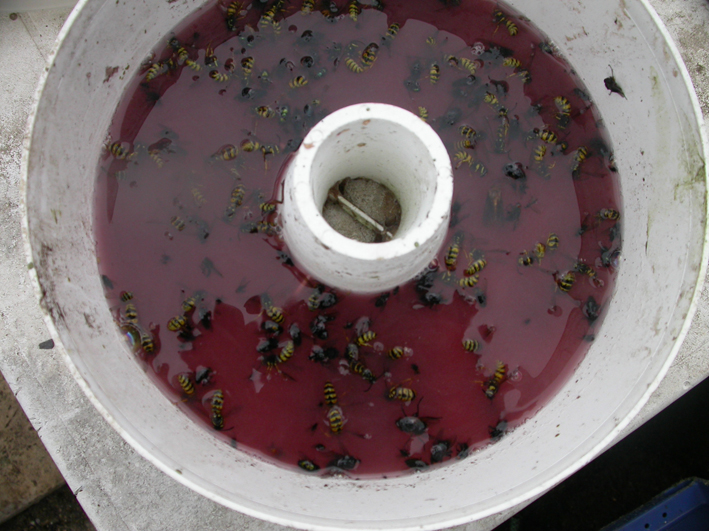I think some of this discussion misses the point of what beekeepers try to achieve. There seems to be a concern that adding traps to an apiary risks making robbing worse than having no traps at all. This doesn't seem logical.
For the beekeeper, the purpose of a wasp trap is to deflect or deter wasps from robbing hives, ideally by trapping as many as possible. They are already attracted to the hive(s), so adding the trap is not adding a novel attractant in itself. We also appreciate that the robbing wasps are doomed, as nests collapse for winter, so there are a finite number in the vicinity and a finite limit to the robbing period.
Our fear is for colonies (particularly small ones) that cannot kill or repel the wasps, and will thus be stripped of stores. Technically, these colonies are low efficiency wasp traps - they attract the wasps, reward them, then let them go. Given how wasps will target apiaries (due to HM's constant 'honey plume') and then concentrate on the least well defended hives, beekeepers view the success of a trap by the numbers of wasps it retains. Every wasp trapped is one less wasp to rob hives.
Take away the traps - even the 100% efficient ones - and the apiary will still be a huge wasp magnet. The traps themselves are not responsible for attracting the wasps, the hives are. Even a low efficiency trap is better than nothing, and will be reducing the robbing problem (regardless of however many wasps it lets go) by simply taking a certain number of wasps out of the robbing equation.
For my money, these 'vaso trap' hornet trap tops on a 2lb jar with ~ 2" of 50:50 ambrosia and fermented honey washings is doing a grand job of hoovering up the wasps in my mating, nuc, and production apiaries. Currently having to empty them every 3-7 days as they fill up.
You do need to check them for hornets, but as long as you do this regularly then you can fish them out alive; the hornets have the strength and stability to climb onto the crust of wasps. Incidentally, you can just pop the lid off and offer a finger for the hornet to climb out on.
Her only concern will be to get free of the syrup, clean herself, and depart; you will get a close encounter with a fascinating insect. Usual caveat applies to handling stinging insects calmly away from their nest: Better drowned than duffers, if not duffers won't drown
























































